
Question and Answers Forum
Question Number 61112 by Kunal12588 last updated on 29/May/19

Commented by Kunal12588 last updated on 29/May/19

Commented by Kunal12588 last updated on 29/May/19
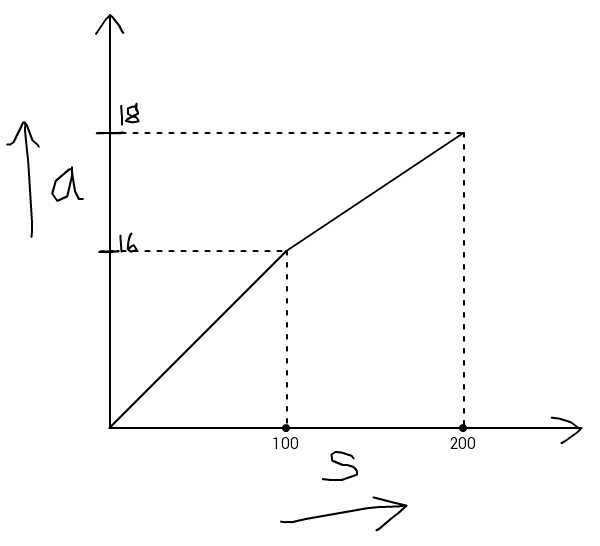
Commented by Kunal12588 last updated on 29/May/19

Commented by mr W last updated on 29/May/19

Answered by tanmay last updated on 29/May/19
![a=(dv/dt)=(dv/ds)×(ds/dt)=v×(dv/ds) upto s=100 meter →(dv/ds)=m=tanθ=((40−0)/(100−0))=(2/5) eqn of v−s graph upto s=100 v=(2/5)×s →[y=mx ] so when s=50 v=(2/5)×50=20 a=v×(dv/ds)=20×(2/5)=8m/sec^2 eqn v−s graph when s∈[100,200] using (y−y_1 )=((y_2 −y_1 )/(x_2 −x_1 ))(x−x_1 ) (100,40) and (200,50) [x→s y→v] v−40=((50−40)/(200−100))(s−100) v=40+(1/(10))(s−100)→so slope=(dv/ds)=(1/(10)) v=40+(1/(10))(150−100) v=45 a=v×(dv/ds) =45×(1/(10))=4.5m/sec^2 pls check... now when s=50 a=8 ehen s=150 a=4.5 so a−s will be a straight line s→along x axis a→along y axis eqn→ using (y−y_1 )=((y_2 −y_1 )/(x_2 −x_1 ))(x−x_1 ) (a−8)=((4.5−8)/(150−50))(s−50) a−8=((3.5)/(100))(s−50) a=0.035s+8−((3.5)/2) a=0.035s+6.25](Q61118.png)
Commented by Kunal12588 last updated on 29/May/19
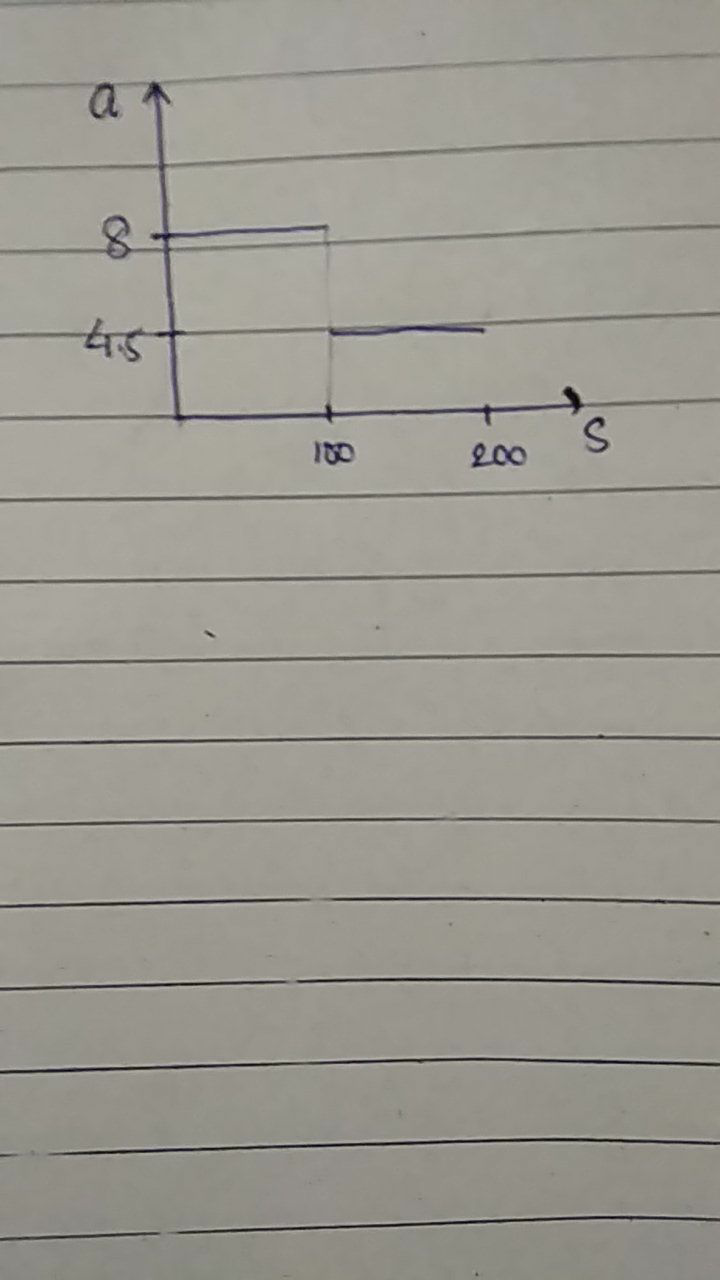
Commented by Kunal12588 last updated on 29/May/19

Commented by tanmay last updated on 29/May/19
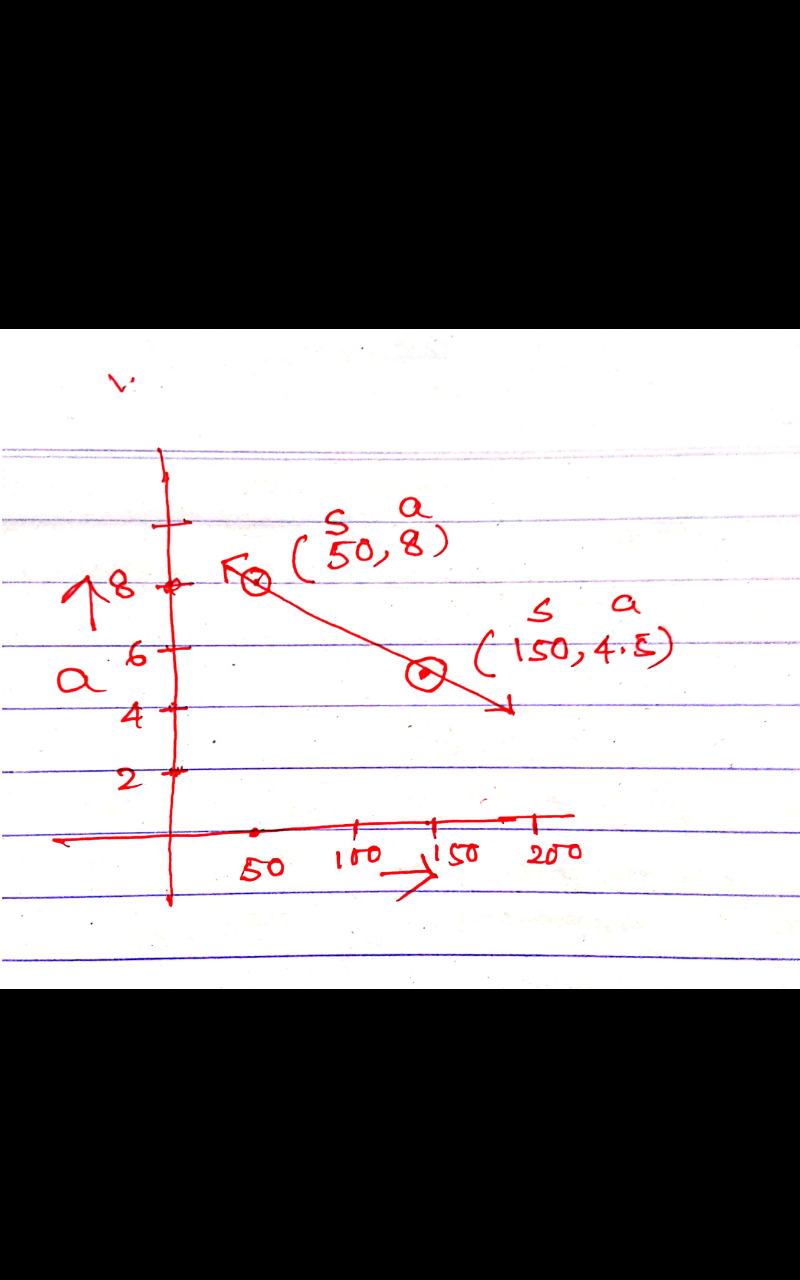
Commented by tanmay last updated on 29/May/19

Commented by Kunal12588 last updated on 29/May/19
https://t.me/kunal1234523
Answered by mr W last updated on 30/May/19
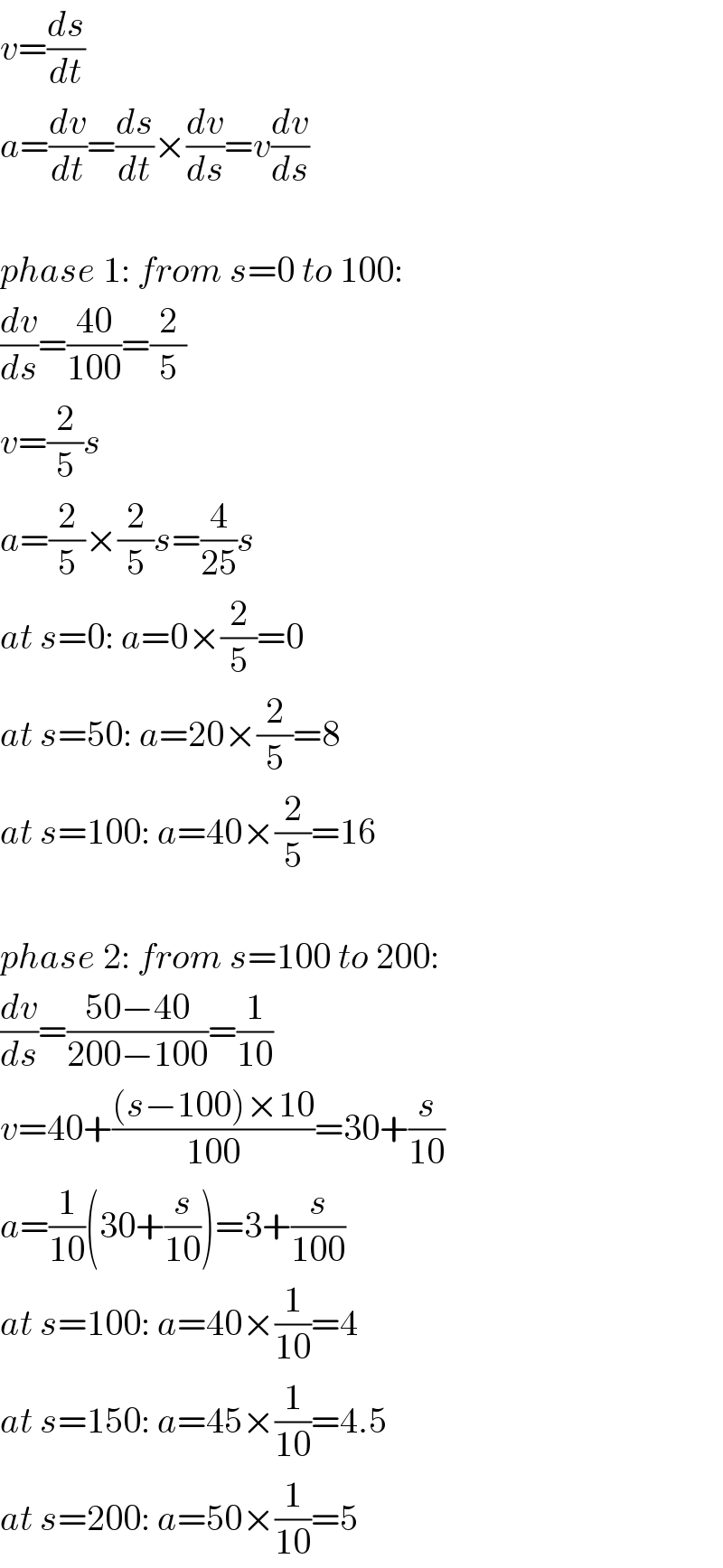
Commented by mr W last updated on 29/May/19
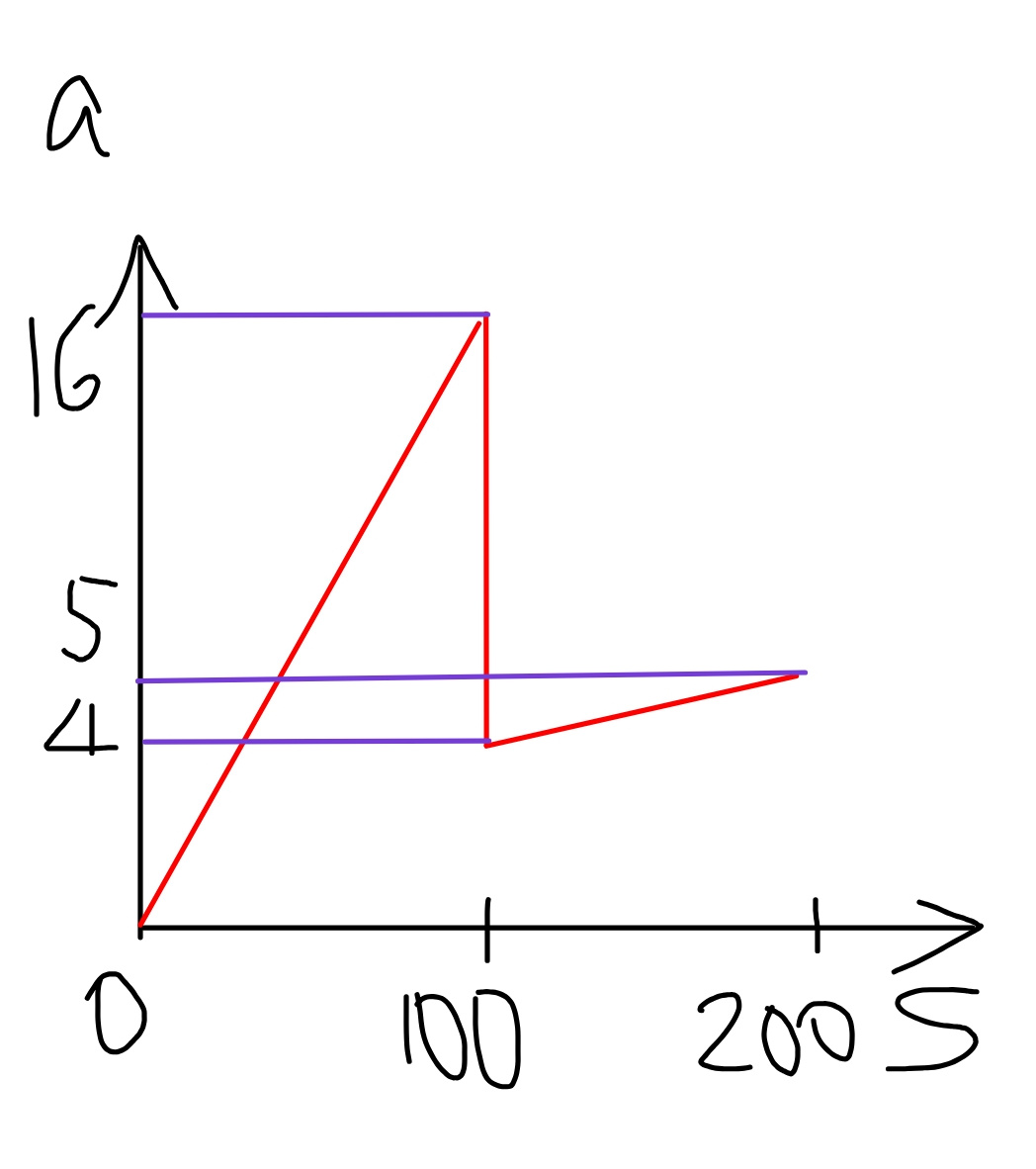
Commented by mr W last updated on 29/May/19
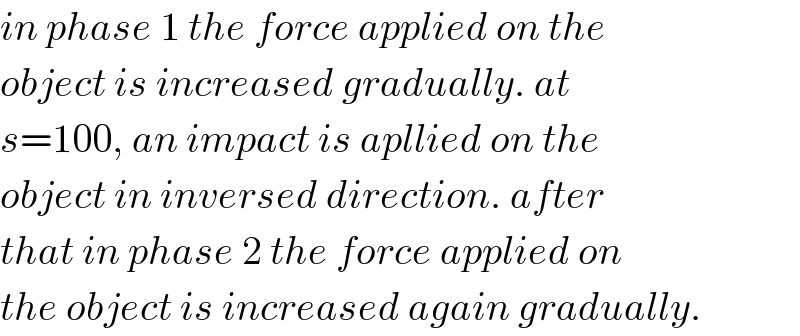
Commented by Kunal12588 last updated on 30/May/19
![thank you sir so my first phase for s∈[0,100] was correct.](Q61188.png)
Commented by Kunal12588 last updated on 30/May/19

Commented by mr W last updated on 30/May/19

